Symptoms of Rheumatoid Arthritis: According to the John Hopkins Arthritis Center, more than 1.3 million Americans—or about 2% of the population—have rheumatoid arthritis. The immune system of the body attacks joints as a result of an autoimmune illness. Patients experience difficulty moving as a result, and some get lung and cardiac problems.
Age is a risk factor for developing the chronic disease of rheumatoid arthritis (RA). The symptoms are crucial because they can impact your joints, eyes, or head. You should get familiar with these early indications of RA, as well as the diagnostic and treatment options, for the benefit of your health.
Keep reading for a possible reason behind tiredness.
Persistent Joint Pain
Inflammation occurs inside the joints of RA patients. Versus Arthritis claims that when the body sends more fluid to fight the inflammation, the strain on the joints grows. As a result, different locations of the joints are frequently painful for RA sufferers.
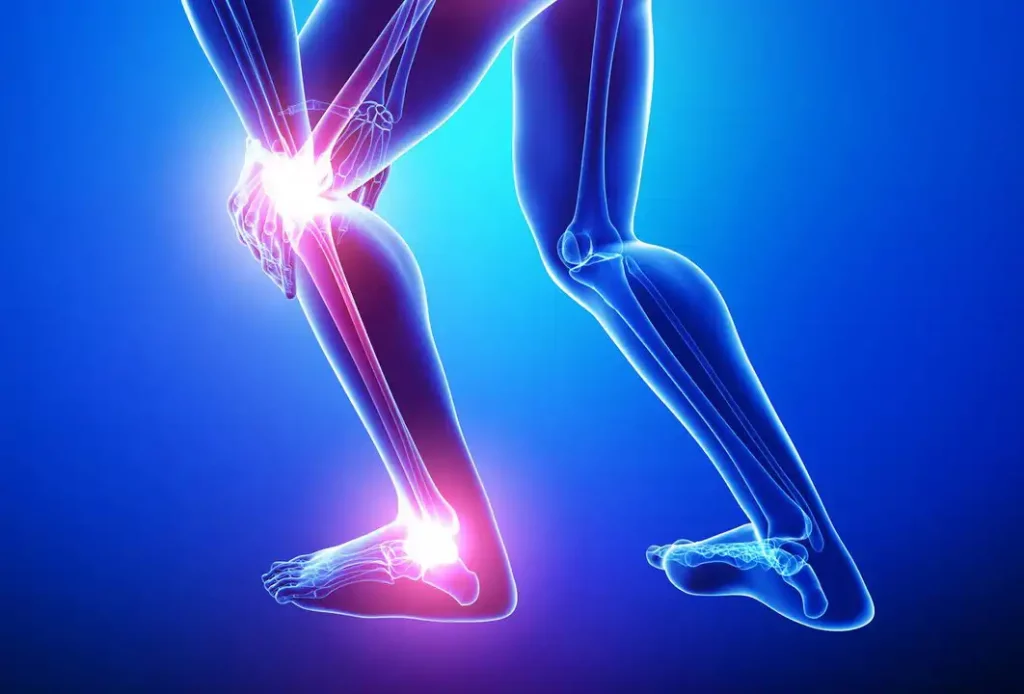
According to the Arthritis Foundation, RA pain typically lasts six weeks or more. The fingers, wrists, shoulders, knees, and ankles are typical places. The inflammation may cause chest pain in some patients. Visit a doctor if your symptoms persist for a long time without a clear cause.
Numbness And Tingling With No Apparent Cause
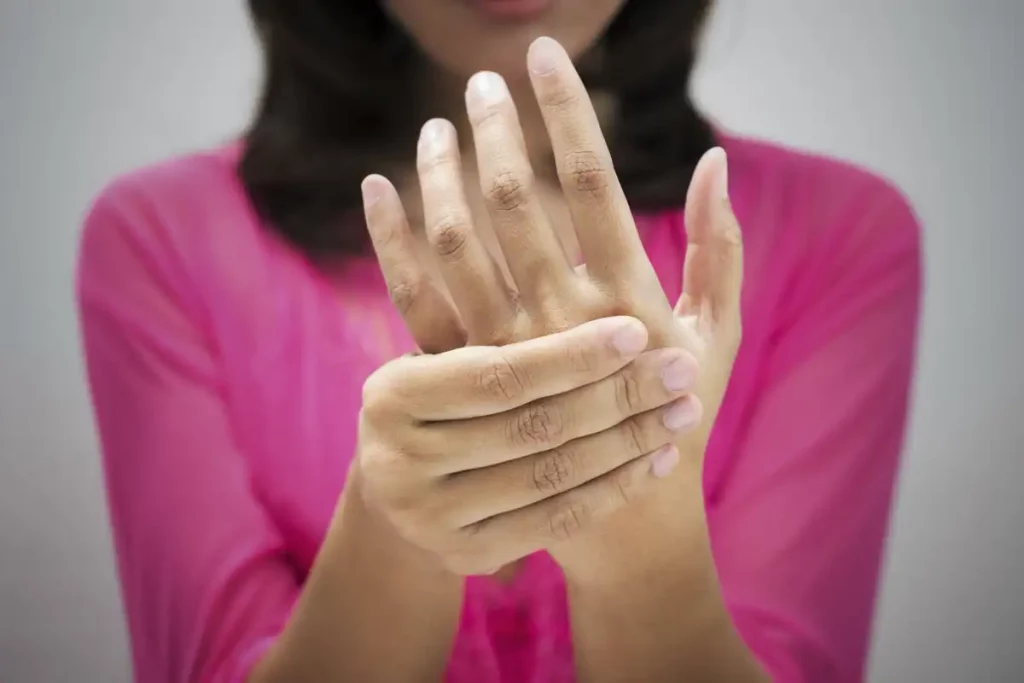
At least 5% of RA patients have tingling or numbness, typically in their hands. The Arthritis Foundation claims that carpal tunnel syndrome rather than RA might perhaps cause this symptom. A pretty typical side effect of RA is CTS.
So how can you tell if you have carpal tunnel syndrome or rheumatoid arthritis? Professor of rheumatology at Northwestern University, Dr. Eric Ruderman, advises consulting a specialist. Depending on how long episodes persist, where you experience numbness, and what other symptoms you have, your doctor will determine your diagnosis.
Unexplained And Continuous Joint Stiffness
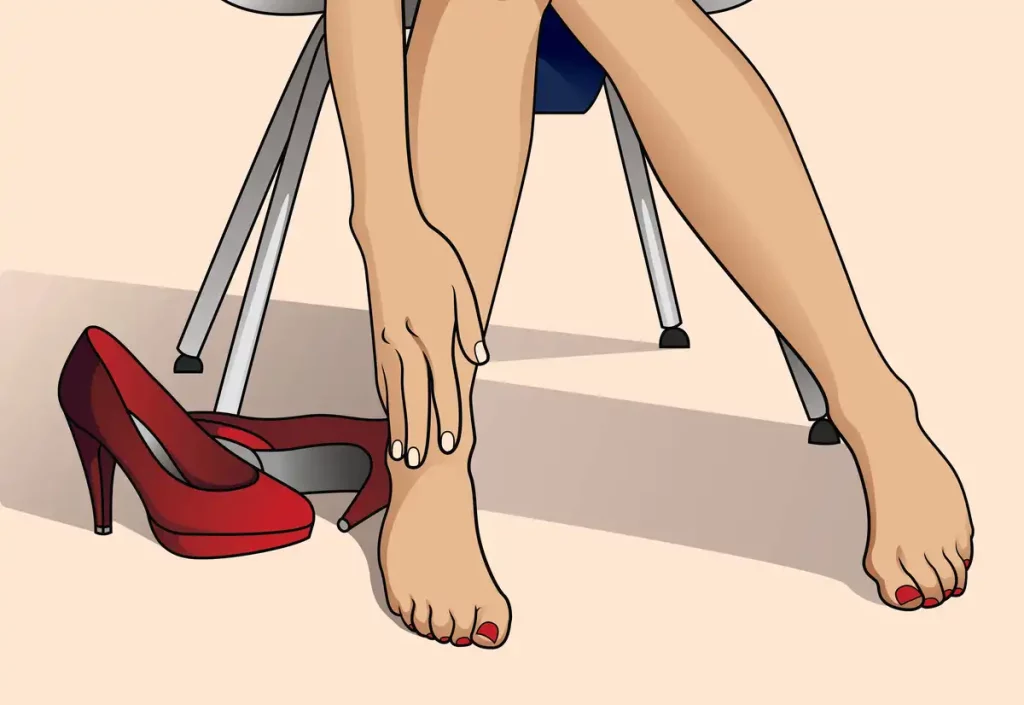
Although stiff joints are a typical RA symptom, many patients have problems differentiating between muscle aches and autoimmune diseases. The Johns Hopkins Arthritis Center states that RA joint pain can continue for days to weeks before going away and coming back over time.
Although every patient has a different number of stiff joints, many of them have more than two. According to WebMD, stiffness typically affects the fingers, wrists, ankles, knees, elbows, hips, and shoulders. Even though the pain could start as tenderness, it eventually gets worse.
Fatigue

The tiredness symptom of RA is characterized by frequent episodes of extreme physical depletion that interfere with daily functioning. The Arthritis Foundation reports that 50% of RA patients experience acute tiredness, and 80% of patients report feeling run down. According to Arthritis Care and Research, fatigue can appear as inactivity, sadness, and poor sleep.
The body-wide inflammation that RA causes is probably what causes fatigue. Terence Starz, a rheumatologist, underlines the distinction between weariness and tiredness. The ailment appears out of nowhere and significantly affects day-to-day activities.
If you receive headaches often, you’ll want to keep reading.
A Low-Grade Fever
Adults are generally not regarded at risk from fevers under 101°F. However, rheumatoid arthritis may be present if the temperature is consistently between 99 and 101 degrees Fahrenheit. According to Harvard Health Publishing, this low-grade fever frequently goes along with perspiration and trouble falling asleep.
In addition to symptoms, RA fevers frequently arise, according to Arthritis Health. These include joint pain or stiffness and weariness. Although many individuals might mistake these symptoms for a typical fever, if you have RA, they might go away and come back. Keep in mind that the typical length of a fever is less than a week.
Long Periods Of Morning Stiffness

When your joints feel strained after waking up, morning stiffness results. According to the UK’s National Health Service, the stiffness associated with RA frequently persists for more than 30 minutes. According to WebMD’s interview with rheumatologist Nathan Wei, morning stiffness is a common problem for RA patients.
Why does stiffness develop in the morning? The Scandinavian Journal of Rheumatology has published data that suggests it originates from substances that promote inflammation. The symptom typically gets worse after extended periods of inactivity, such napping. Consult a doctor if there is no obvious reason for your morning stiffness.
Dry Eyes
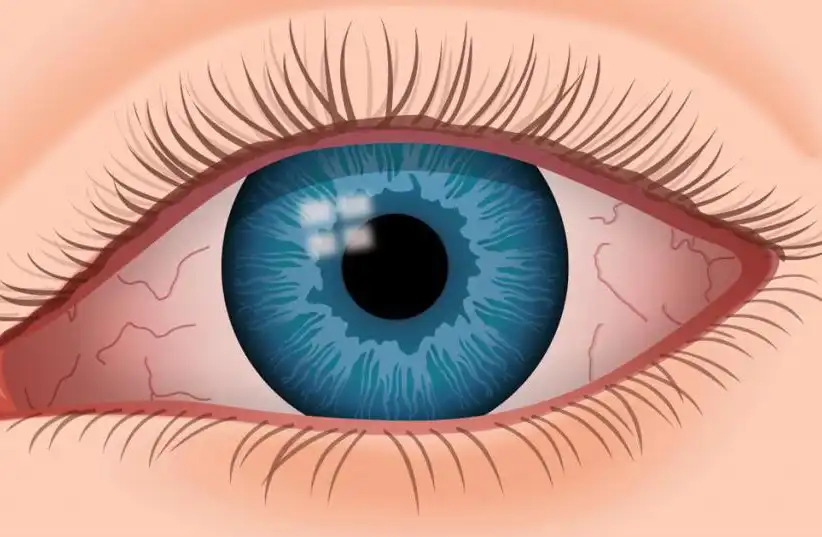
Both the mouth and the eyes become dry as a result of rheumatoid arthritis. According to the Arthritis Foundation, keratitis sicca, often known as dry eye syndrome, can manifest during RA. According to retina specialist Dr. Sunir J. Garg, persistent dry eye can lead to discomfort and poor vision.
Menopause, an infection, or an issue with your eyelids are additional causes of dry eyes. If your dry eyes persist for more than a week or two, you should visit a doctor, advises the Gordon Schanzlin New Vision Institute.
Frequent Headaches Or Migraines

Rheumatoid arthritis is one of the many causes of headaches, but it is also a possibility. The National Headache Foundation states that RA sufferers may experience inflammation in their jaw, neck, or spine. Joint pain is brought on by the swelling’s pressure on them.
The National Rheumatoid Arthritis Society cautions that the symptoms of fibromyalgia and RA headaches are very similar. Consult a doctor if your headaches are frequent, severe, or occur more than three times a week. According to WebMD, even headaches and a stiff neck may be signs of much more.
Stay tuned for some telltale symptoms on the skin.
Difficulty Moving Your Joints

Patients may have trouble moving because RA causes inflammation in the joints. Patients could find it difficult to button shirts, tie their shoes, or open jars, according to the University of Rochester Medical Center. People occasionally could find it difficult to hold or pinch objects.
There could be a variety of reasons why you’re immobile. According to Physiopedia, the symptom could be caused by nodules, nodules, weakness, or soreness. Consult a professional if your symptoms worsen over time or if they go away then come back.
Consistent, Reoccurring Hives

Hives are a frequent RA symptom. According to the American Academy of Dermatology, allergic reactions or autoimmune illnesses like RA can sometimes cause hives. According to a 2010 study, autoimmune diseases are present in 24% of persons with chronic hives.
20% of people experience chronic hives, also known as urticaria, at some point in their life. If your hives persist for more than a few days, the American College of Asthma, Allergy, and Immunology advises consulting a physician. If you frequently have hives, you might also want to contact a doctor.
Rashes Or Skin Redness (Vasculitis)
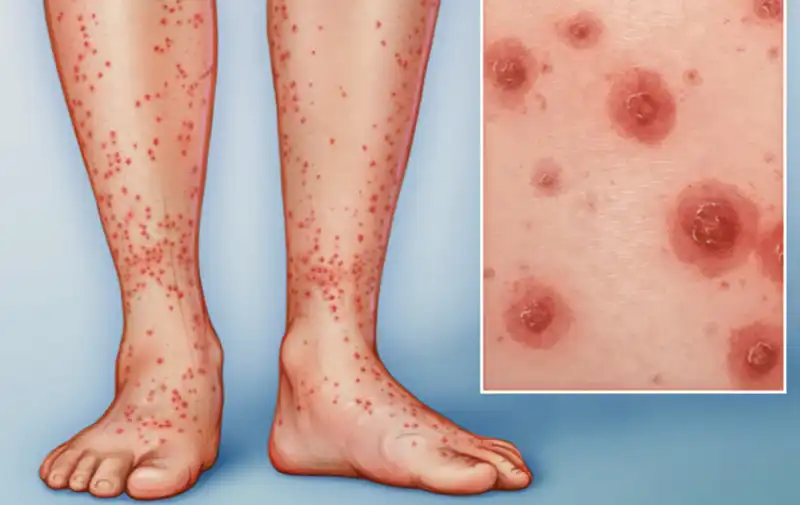
The largest organ in our body, the skin, is also affected by RA, even though many people may only link it with joint discomfort. According to the Vasculitis Foundation, vasculitis affects one in every 100 RA patients. Blood vessels near to the skin are irritated by the disease, resulting in obvious red spots.
Vasculitis usually develops on the tips of fingers and toes in RA patients. Larger blood vessels throughout the legs may also be affected. Even though only about 5% of RA patients experience vasculitis, it is nevertheless a sign to be on the lookout for.
Coming up: a symptom that manifests only in your mind.
Dry Mouth

Dry mouth is a typical side effect of exercise or dehydration. However, if your dry mouth persists despite drinking water, it can indicate a salivary gland issue. The Arthritis Foundation claims that RA patients are more likely to develop Sjögren’s syndrome, a condition in which the immune system attacks the salivary glands.
Consult your dentist if you experience chronic dry mouth because it may be caused by a tooth issue, advises the National Rheumatoid Arthritis Society. The symptom could potentially be a side effect of a particular drug. When in doubt, consult a specialist.
Bumps On The Skin (Nodules)
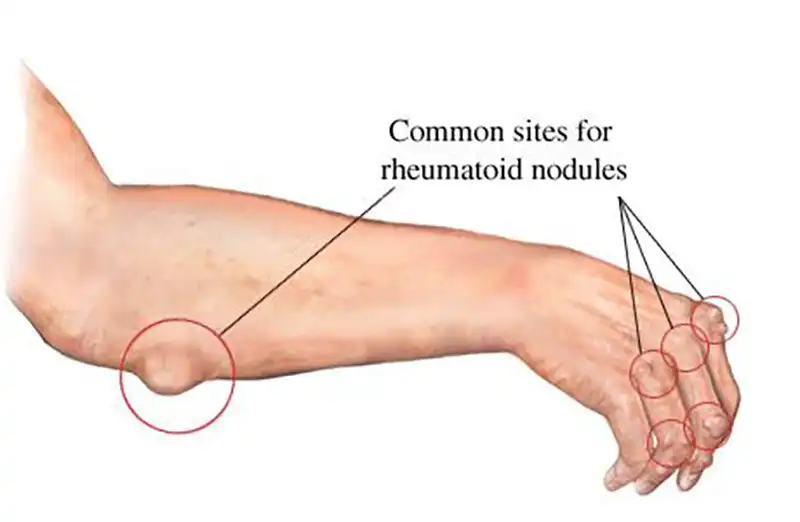
The American Osteopathic College of Dermatology reports that pimples develop on the joints in one-fourth of RA patients. The protein rheumatoid factor, which targets healthy tissues, can occasionally be produced by rheumatoid arthritis. According to Dr. Matthew Ezerioha, the outcome is obvious bumps on the fingers, knuckles, elbows, forearms, knees, or heels’ backs.
Nodules are these lumps, which range in size from a pea to a lemon. Rarely, nodules can also develop on the voice chords, lungs, or eyes. Although these bumps are typically not harmful, you should still seek professional advice just in case.
Brain Fog
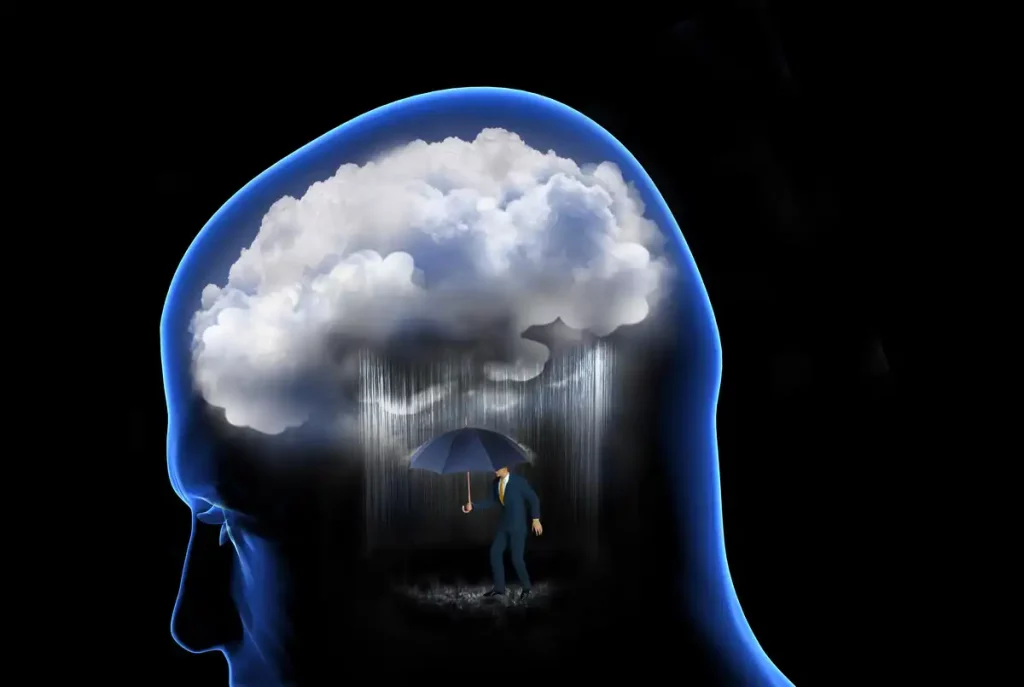
Brain fog is a symptom of having trouble remembering daily chores and thinking coherently. According to a 2012 study published in Arthritis Care & Research, 30% of RA patients experience brain fog. According to rheumatologist Robert Hylland, the rate may even be as high as 70%.
Few patients mention brain fog as a symptom, according to Dr. Hylland, partly because they don’t think it’s required. Concentration issues in RA patients may result from discomfort or insufficient sleep. If you experience any of the following symptoms together with brain fog, see a doctor.
Heart problem or RA? Stay tuned to learn how to distinguish the symptoms.
Purple Skin Discoloration (Livedo Reticularis)

A skin disorder called livedo reticularis, which causes purplish lace patterns on the skin, may coexist with rheumatoid arthritis. According to the Current Opinion in Rheumatology, this symptom is experienced by 75% to 89% of RA patients.
Livedo reticularis is typically widespread and unharmful in cold weather. However, the Rheumatologic Dermatology Society states that RA patients can get it in the legs along with lesions that may be uncomfortable. Consult a specialist if this occurs or if your skin appears purple for an extended period of time.
Insomnia

56.8% of people with RA have trouble falling asleep, according to data published in the Journal of Clinical Medicine. Joint pain or discomfort is a contributing factor in at least 42% of these cases. In some instances, sleep apnea or restless legs syndrome may be the cause of insomnia.
According to Dr. Suneel Valla of the Arthritis Foundation, the inflammation in RA patients’ bodies often results in persistent discomfort. In other words, sleeplessness brought on by RA frequently occurs together with joint pain or discomfort. You might wish to consult a specialist if you’re displaying the same symptoms.
Discover more trends:
- Keep an Eye Out for Early Signs of Rheumatoid Arthritis: A Guide
- Nicole Kidman’s Revealing Dress Sparks a Heated Discussion
- Watch Out For The Early Signs Of Rheumatoid Arthritis
- Follow us on Facebook





